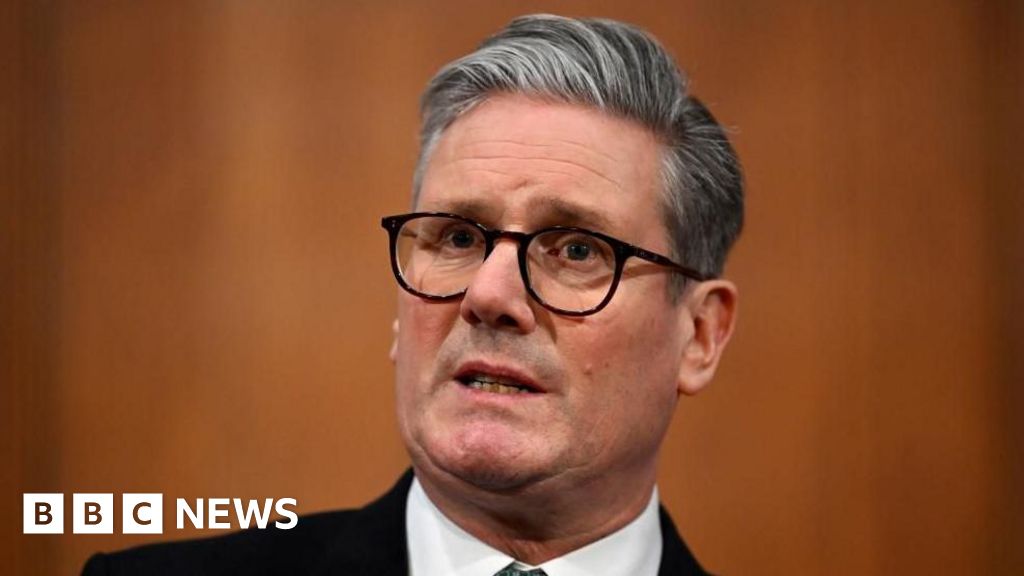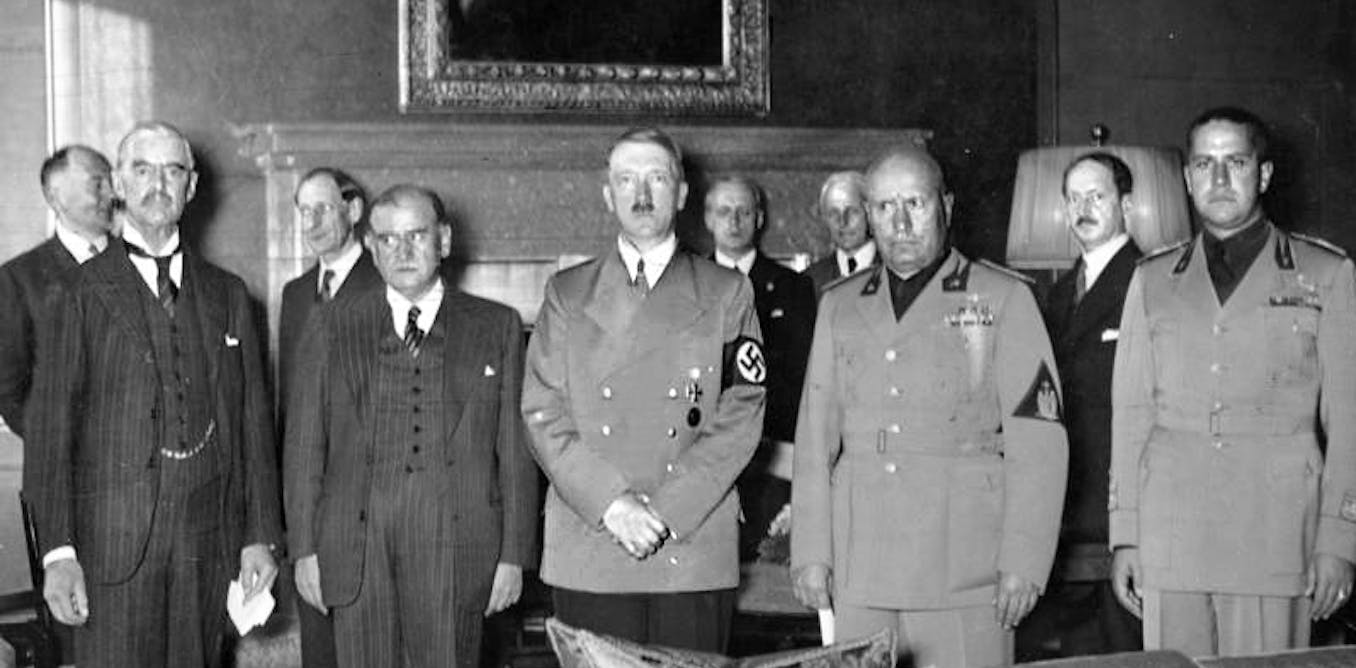
Ukraine wasn’t invited to a significant meeting involving U.S. and Russian officials taking place in Saudi Arabia this week, aimed at discussing what peace in Ukraine might entail.
Ukrainian President Volodymyr Zelensky stated that Ukraine will “never accept” any conclusions from negotiations that do not include its presence, as the fight against Russia’s prolonged conflict continues.
The decision to address the fate of Ukrainians without their input – along with U.S. President Donald Trump’s overtly coercive notion to seize a portion of Ukraine’s rare mineral wealth in exchange for ongoing U.S. assistance – sheds light on Trump’s perspective of Ukraine and its role within Europe.
This isn’t the first instance of powerful nations negotiating borders or areas of influence while disregarding the voices of the resident populace.
Such top-down political maneuvers often yield negative consequences for the affected populations, as illustrated by these seven historical instances.
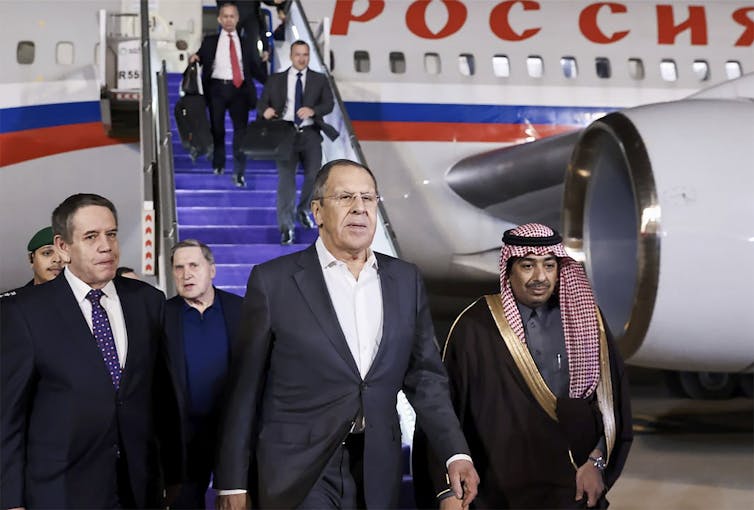
Russian Foreign Ministry Press Service handout/EPA
1. The Scramble for Africa
Between 1884 and 1885, German Chancellor Otto von Bismarck summoned European powers to Berlin for a conference to formalize the division of Africa. Not one African delegate was present at this gathering, known as “The Scramble for Africa.”
This conference resulted in the establishment of the Congo Free State under Belgian rule, a site notorious for colonial atrocities that claimed millions of lives. Germany also founded the colony of German South West Africa (modern-day Namibia), where the first genocide of the 20th century was later committed against its indigenous populations.
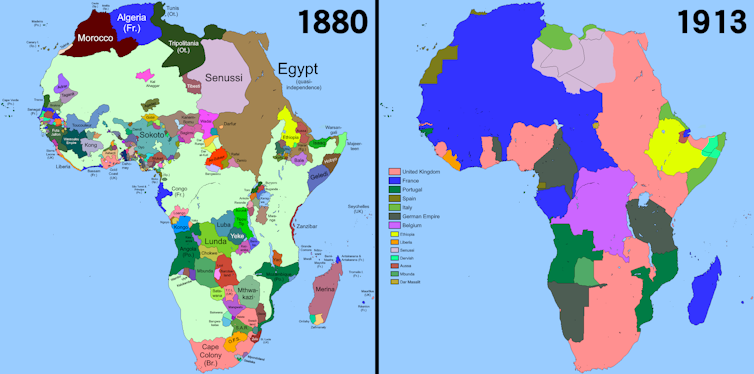
Wikimedia Commons/Somebody500
2. The Tripartite Convention
In 1899, another division occurred beyond Africa; Germany and the United States held a conference and reached an agreement to partition Samoa, ignoring the desires of the Samoan people for self-governance or a Pacific states confederation including Hawaii.
As “compensation” for their absence in Samoa, Britain received authority over Tonga. German Samoa came under New Zealand administration after World War I and remained a territory until 1962, while American Samoa continues to be a U.S. territory today.
3. The Sykes-Picot Agreement
During World War I, British and French officials convened to determine how to divide the Ottoman Empire post-war. The Ottomans, as adversaries, were conspicuously absent from these discussions.
The collaboration between Mark Sykes of Britain and François Georges-Picot of France resulted in a reconfiguration of Middle Eastern borders to serve their national interests. The Sykes-Picot Agreement contradicted earlier assurances made to support Arab independence, detailed in the Hussein-McMahon correspondence.
Discover more:
The Sykes-Picot agreement’s ongoing impact on the Middle East.
Moreover, the Sykes-Picot Agreement conflicted with the promises outlined in the Balfour Declaration regarding the establishment of a Jewish homeland in Ottoman-controlled Palestine. This agreement laid the groundwork for numerous conflicts and colonial mismanagement in the Middle East, remnants of which still resonate today.
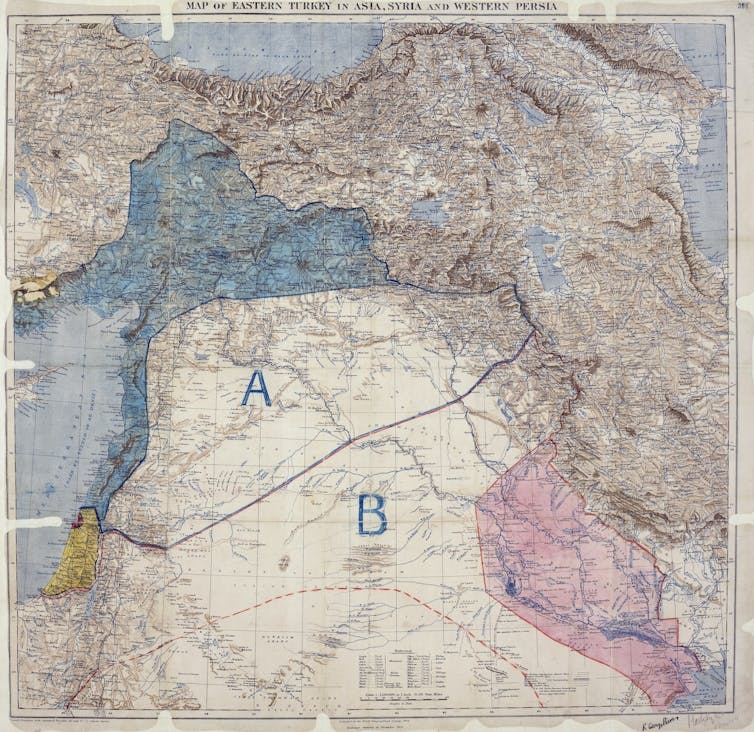
The National Archives (UK)/Wikimedia Commons
4. The Munich Agreement
In September 1938, British Prime Minister Neville Chamberlain and French Prime Minister Édouard Daladier conferred with Italy’s Benito Mussolini and Germany’s Adolf Hitler to sign the Munich Agreement. Their aim was to prevent the escalation of war in Europe amid Hitler’s aggression in Czechoslovakia’s Sudetenland, claiming to protect German minorities while denying Czechoslovakians a voice in the negotiations.
This meeting has since become synonymous with the term “Munich Betrayal,” regarded as a quintessential example of the failure to appease an aggressive regime in the hope of avoiding conflict.
5. The Évian Conference
In 1938, 32 nations convened in Évian-les-Bains, France, to discuss the plight of Jewish refugees escaping persecution in Nazi Germany.
Prior to the conference, an agreement between the US and Britain ensured that neither would exert pressure to expand their quotas for accepting Jewish refugees into the US or British Palestine.
While Golda Meir was present as an observer, neither she nor any representatives from the Jewish community were allowed to partake in the discussions. Ultimately, the conference attendees largely failed to reach a consensus on accepting Jewish refugees, apart from a singular exception in the Dominican Republic, leaving many Jews in Germany trapped until the Holocaust’s full force emerged.
6. The Molotov-Ribbentrop Pact
As Hitler prepared for his invasion of Eastern Europe, he faced resistance from the Soviet Union. To mitigate this, he entered into a non-aggression pact with the USSR.
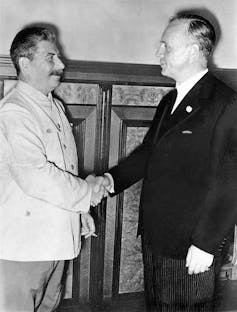
German Federal Archives/Wikimedia Commons
This agreement, named after Vyacheslav Molotov and Joachim von Ribbentrop, the respective foreign ministers, assured that the Soviet Union would not intervene when Hitler invaded Poland. It also allowed for the division of Europe into zones of influence for both Nazi and Soviet powers, enabling the Soviets to extend into Romania, the Baltic states, assault Finland, and seize parts of Poland.
Unsurprisingly, some Eastern Europeans perceive the ongoing U.S.-Russia discussions concerning Ukraine as a revival of the secretive diplomacy that once split smaller nations during World War II.
7. The Yalta Conference
As World War II drew to a close, British Prime Minister Winston Churchill, Soviet leader Josef Stalin, and U.S. President Franklin D. Roosevelt convened in 1945 to determine the future of post-war Europe. This significant meeting would later be named the Yalta Conference.
Alongside the Potsdam Conference that followed, Yalta established the political foundations that would incite the Cold War division across the continent.
During Yalta, the “Big Three” agreed upon the partitioning of Germany and granted Stalin a sphere of influence over Eastern Europe.
This resulted in the establishment of numerous politically-controlled buffer states in Eastern Europe, a strategy many believe Putin aims to replicate today in Eastern and Southeastern Europe.




